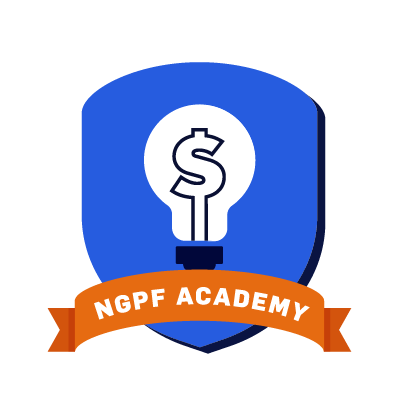Card Sorts and Amplify Classroom: Two ways to teach savings
Let's explore two great options for students who love learning with technology and students who are tactile learners.
The Financial Algebra Saving & Systems of Equations unit has both options available to teach the same set of exercises, letting you or your students select what's best for them.
CARD SORT: Linear Equations in Standard Form
This tactile card sort is a part of the lesson Writing Linear Equations in Standard Form in the Financial Algebra Course.
In Part I, students match the graph of a linear function to its equation in standard form. In Part II, they match a word problem to a linear equation. This collaborative sorting activity is more fun than doing the problems in the same-old, same-old worksheet format.
Materials:
- You'll need to print and cut decks of cards for each student (that's a lot of decks) or for groups of students (probably the better choice, unless you have a super small class).
- We've made the cutting easy with equal sized cards so the materials prep shouldn't take too long.

AMPLIFY: Card Sort: Linear Equations in Standard Form
The same card sort is available as an Amplify Classroom activity. Students sort the same exact graphs, equations, and scenarios on a digital platform, instead of on paper.
One benefit of using Amplify Classroom is you can watch the whole class in real-time on the teacher-facing side and see who's mastered it and who's struggling. The activity is set up so students do their drag and drop matching on the first slide, and then they advance to the next slide to see how many matches they have correct.
 .
. 
You can find the Amplify Classroom version of this activity linked in lesson guide & answer key, on the right hand side of the unit page, or on the Amplify Classroom Activities page.
New to Amplify Classroom? Check out their guide to getting started.
A Second Set of Savings Card Sorts
If you like Card Sorts, check out CARD SORT: Graphing Systems of Equations. This activity is also available both on paper and as an Amplify Classroom activity. Instead of two separate rounds, this card sort is set up so that students match a scenario with a graph, a system of linear equations, and a solution. They'll end up with 16 cards sorted into 4 perfect groups of linear systems.
Because these two Card Sort activities are in the Financial Algebra Savings unit, every scenario is themed around saving money, to reinforce not just algebra content but also saving concepts. It's the perfect blend of math and personal finance. You can find all this material on the Financial Algebra Course Savings page, which also includes 10 complete lesson guides and a unit test, too.
Convenient Direct Links to Everything Mentioned Here
- CARD SORT: Linear Equations in Standard Form (paper form)
- AMPLIFY: Card Sort: Linear Equations in Standard Form (online version)
- CARD SORT: Graphing Systems of Equations (paper version)
- AMPLIFY: Graphing Systems of Equations with Savings Balances (online version)
In case you missed it - Desmos Classroom has joined Amplify.
Here’s what that means:
- Desmos Classroom activities are now a part of Amplify Classroom
- The Desmos graphing calculator remains the same, as part of Desmos Studio
- All NGPF Amplify Classroom activities are still available and 100% free!
If you used Desmos Classroom before, the shift should be straightforward. Review this checklist from Amplify.
About the Author
Kathryn Dawson
Kathryn (she/her) is excited to join the NGPF team after 9 years of experience in education as a mentor, tutor, and special education teacher. She is a graduate of Cornell University with a degree in policy analysis and management and has a master's degree in education from Brooklyn College. Kathryn is looking forward to bringing her passion for accessibility and educational justice into curriculum design at NGPF. During her free time, Kathryn loves embarking on cooking projects, walking around her Seattle neighborhood with her dog, or lounging in a hammock with a book.
SEARCH FOR CONTENT
Subscribe to the blog
Join the more than 11,000 teachers who get the NGPF daily blog delivered to their inbox:
MOST POPULAR POSTS









